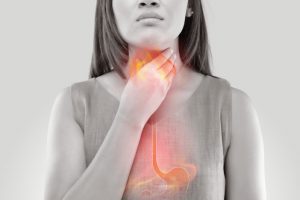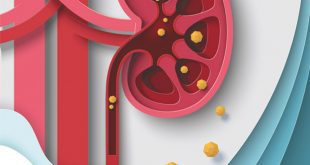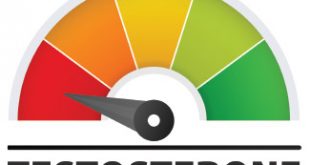An Innovative Procedure Can Alleviate Your Pain & Get You Off Medications
 GERD causes delayed emptying of the stomach acids and food, creating numerous symptoms, including esophageal burning, chest pains, and regurgitation. Along with discomfort and systemic health-related factors, acid reflux can adversely affect your lifestyle.
GERD causes delayed emptying of the stomach acids and food, creating numerous symptoms, including esophageal burning, chest pains, and regurgitation. Along with discomfort and systemic health-related factors, acid reflux can adversely affect your lifestyle.
There are over-the-counter and prescription medications that can help control acid reflux, but there are some long-term implications that adversely affect individuals. Long term, these medications may stop working altogether, and if you ask most people, they’d rather not take medicine for the rest of their lives if there is a viable alternative.
For many people, the LINX procedure is the answer.
The LINX is a string of small magnetic beads that form a ring at the base of the esophagus and stomach, which creates a mechanical barrier for reflux and regurgitation. Acid can get into the throat in the middle of the night and aspirate, which is a common yet dangerous side effect for many people. The LINX device prevents acid reflux and regurgitation from happening.
Because hiatal hernias and acid reflux are so often interconnected, this procedure allows us to repair both the hernia and place the LINX device simultaneously.
Before we decide which procedure is best for a patient, there are several issues that we consider with LINX or traditional repair treatment, which is a laparoscopic antireflux surgery (also called Nissen fundoplication).
Often, a hiatal hernia causes the stomach to protrude into or put pressure on the esophagus, causing more acid and regurgitation issues. Before we decide which procedure is optimal, a gastroenterologist will do a PH study to check the levels of acid. We also do an EGD scope (tiny camera) to check for hiatal hernia, and we scope the esophagus to check for functionality. Once these are established, we customize a plan of action for the patient’s specific needs.
How LINX works
The tiny ring of beads is placed around the base of the esophagus and stomach, allowing the patient to swallow naturally. With LINX, the normal expansion and contraction mechanisms are still in place. LINX is customized for each patient’s anatomy and function.
LINX is often performed with robotic-assisted surgery, but it can also be accomplished with laparoscopic ports. The benefits of robotic surgery are that it is extremely precise due to the extensive magnification of the images, and it allows the patient to recover quickly with minimal pain or discomfort. Patients that have the LINX procedure via robotic-assisted surgery will stay overnight in the hospital. Patients may have some discomfort as they get used to the device for a few days to a week, and their overall healing is usually about ten days to two weeks.
Traditional Repair
The Nissen fundoplication is also a viable treatment that I’ve successfully performed on patients for the past several decades. It is a more in-depth procedure done laparoscopically; however, the healing times will be longer than with robotic-assisted surgery.
LINX offers Consistent Results
There is demonstrated consistent symptom improvement across multiple studies.1 88% of patients reported that bothersome heartburn had been eliminated 5 years after treatment with the LINX Reflux Management System.2 85% of patients were free from dependence on daily reflux medication after treatment with the LINX Reflux Management System. 99% of patients eliminated regurgitation at 5 years.3
The goal is for our patients to not have to take medications any longer and to enjoy their lives.
If you are struggling with Heartburn, contact your physician to discuss your treatment options.
Pascal E. Spehar, MD
Dr. Pascal Spehar is a board-certified general surgeon affiliated with South Florida Baptist Hospital. He received his undergraduate degree from Rockhurst College in Kansas City, Missouri, and then earned his Doctor of Medicine from the University of Kansas Medical School in Kansas City, Kansas. Dr. Spehar completed his internship and residency at the University of Kansas Medical Center in Kansas City, Kansas. Dr. Spehar performs a wide range of operations, focusing on the abdomen and related organs. His goal is always to provide the best results for his patients with the quickest recovery, guided by experience and innovation, using both invasive and minimally-invasive surgery, including robotics. Dr. Spehar is a Diplomat of the American Board of Surgery, as well as a Fellow of the American College of Surgeons.
BayCare Medical Group General Surgery
1601 W Timberlane Dr Ste 100
Plant City, FL 33566
Phone: (813) 708-1312
Source: https://www.jnjmedicaldevices.com/en-US/product/linx-reflux-management-system
1. Based on 192 patients who underwent MSA with LINX as well as a matched pair analysis in which 47 patients underwent MSA2. 98.1% (p=0.118) and 97.8% of patients, respectively, reported symptom improvement or resolution. In a study of 100 patients implanted with LINX, bothersome heartburn decreased to 11.9% (p<0.001) and bothersome regurgitation decreased to 1.2% (p<0.001).
2. Based on a 5 year prospective, multi-center, single-arm study observing 100 patients who were implanted with LINX, the success criteria for quality of life (50% reduction in total GERD-HRQL score, and PPI use 50% reduction) were met.
3. Ganz R. Edmundowicz S, Taiganides P, et al. Long-term Outcomes of Patients Receiving a Magnetic Sphincter Augmentation Device for Gastroesophageal Reflux. Clin Gastroenterol Hepatol. 2016. 14(5):671-7. Based on a 5 year prospective, multi-center, single-arm study observing 100 patients who were implanted with LINX, regurgitation was 57% at baseline and decreased to 1.2% at 5 years. (p<0.001)
 Central Florida Health and Wellness Magazine Health and Wellness Articles of the Villages
Central Florida Health and Wellness Magazine Health and Wellness Articles of the Villages



